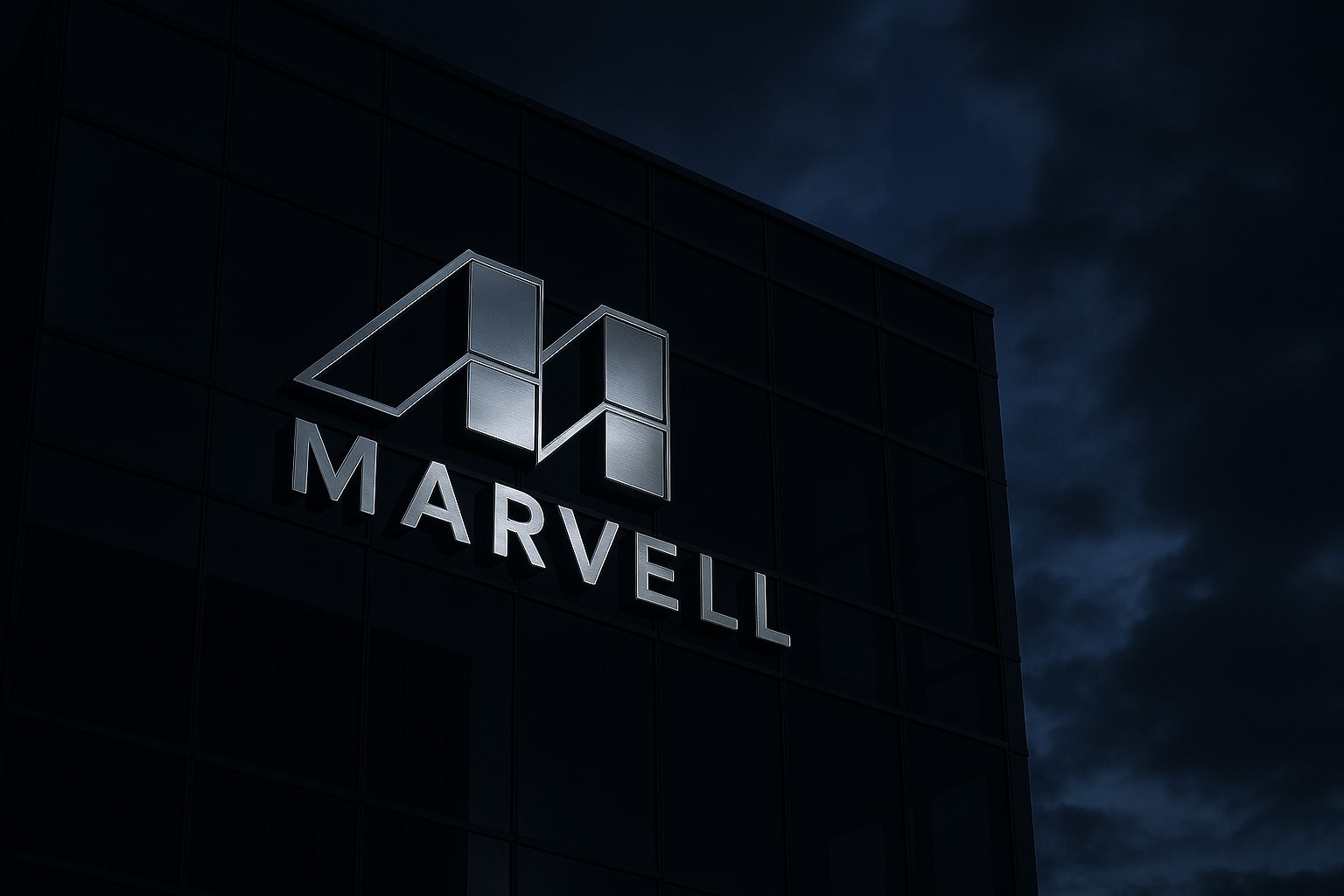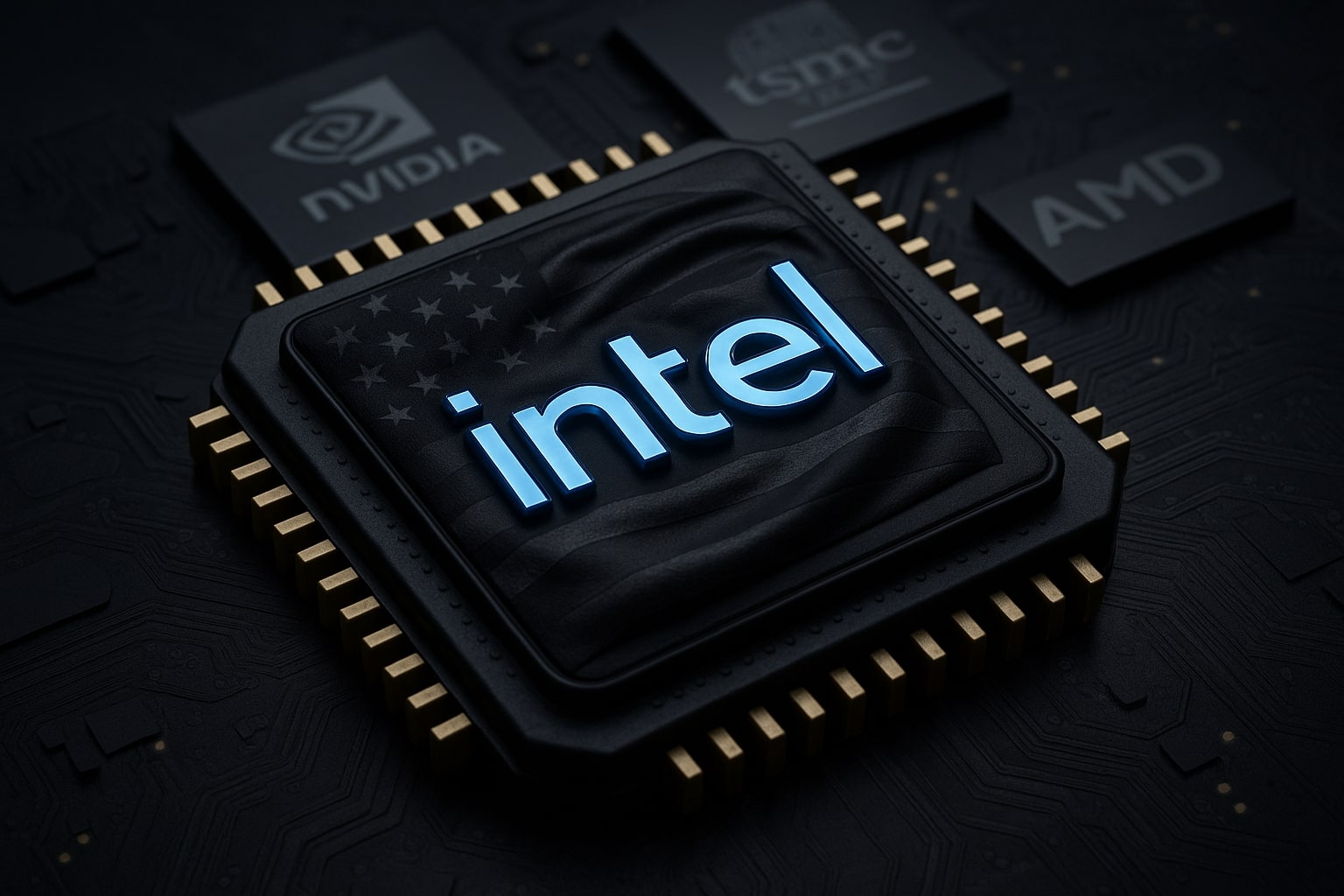Marvell Technology (NASDAQ:MRVL) | Strategic Shift, AI Acceleration, and Financial Firepower Signal Next Phase of Growth
AI Infrastructure Boom Puts Marvell at the Core of Data Center Expansion
Marvell Technology (NASDAQ:MRVL) has become a defining player in the semiconductor industry’s AI-driven transformation. Trading at $90.92, down 2.58% on the day, and rebounding after-hours to $91.67 (+0.82%), the company now commands a market capitalization of $78.38 billion. Over the past six months, the stock has surged +62%, outperforming the broader tech index, driven by the same structural AI demand cycle fueling hyperscaler infrastructure expansion.
Marvell’s Q2 FY2026 results underscored its pivotal role in powering AI computation and networking. Revenue jumped 57.6% year-over-year to $2.01 billion, fueled by 69.2% growth in data center sales, now contributing nearly $1.49 billion to total revenue. Net income soared 200.8% YoY to $194.8 million, while EPS rose 123% to $0.67. With operating expenses stable at $711.8 million (+4%), the company posted an EBITDA of $626.6 million (+145%), signaling stronger efficiency and scalability across high-margin AI segments.
Custom Chip Strategy Reshapes Competitive Positioning
Marvell’s custom chip portfolio is now the backbone of its AI growth thesis. The company has secured 55,000 wafers in advanced capacity from Taiwan Semiconductor Manufacturing Co. (TSMC) for its custom AI XPUs and 2nm SRAM architecture—an essential capacity win amid constrained foundry supply. Unlike NVIDIA (NASDAQ:NVDA), which dominates with universal GPUs, Marvell’s ASIC-based designs are tailor-made for routine, high-throughput AI workloads, enabling hyperscalers like Amazon (NASDAQ:AMZN) and Microsoft (NASDAQ:MSFT) to build cost-efficient, energy-optimized data centers.
The strategic focus on Application-Specific Integrated Circuits (ASICs) grants Marvell a competitive moat in power management and cost efficiency. Its Package Integrated Voltage Regulator (PIVR) platform cuts energy waste, while its 1.6T PAM4 DSPs and co-packaged optics solutions make it a cornerstone supplier for the next generation of AI infrastructure. This specialization reduces hyperscaler dependency on Nvidia’s GPU ecosystem — a crucial dynamic as Amazon and Microsoft diversify their silicon sourcing to mitigate supply risks and pricing exposure.
Financial Foundation Strengthened by Capital Reallocation and Buybacks
Marvell’s capital allocation has entered an aggressive shareholder-return phase. Following the $2.5 billion divestment of its automotive Ethernet division, the company has redirected resources toward AI and data center investments. In September 2025, it authorized a $5 billion share repurchase program, including an accelerated $1 billion tranche, underscoring management’s confidence in sustainable growth and valuation upside.
The impact on free cash flow (FCF) has been striking: $463.5 million (+69.9% YoY) in Q2 and a net cash increase of $338.5 million (+968%). With cash and short-term investments at $1.22 billion (+51.4%), Marvell maintains balance-sheet strength, limiting leverage risk while funding next-gen chip R&D.
This balance between shareholder yield and reinvestment is rare among semiconductor peers. Return on assets (3.68%) and return on capital (4.15%) continue improving as margins expand, while total liabilities increased moderately to $7.16 billion (+17.7%), keeping the debt-to-equity ratio conservative at roughly 0.53x.
Comparative Valuation vs. Peers (AVGO, NVDA, AMD, INTC)
Marvell’s forward valuation remains compelling despite recent appreciation. Its forward P/E (GAAP) of 42.7x and price-to-sales (TTM) of 11.2x sit below Broadcom’s (NASDAQ:AVGO) lofty 58.7x P/E and 28.9x P/S, reflecting a valuation discount of over 50%. Nvidia’s 7.6% higher P/E and AMD’s 61.9% premium highlight how MRVL’s risk-reward balance remains asymmetrically positive for long-term investors.
EBITDA growth of 112.5% YoY outpaces every major competitor, even as Broadcom dominates the custom-chip market with 55–60% share compared to Marvell’s 13–15%. The company’s goal of reaching a 20% market share by 2028 could translate into billions in incremental EBITDA, particularly as data center chip demand expands at a 12.6% CAGR (Persistence Market Research) through 2032.
AI Data Center Tailwinds Redefining Revenue Composition
Marvell’s transformation into a pure AI and data center semiconductor play is nearly complete. The company expects Q3 FY2026 EPS at $0.74 (+71.4% YoY) on revenue of $8.13 billion (+41%), with 27 analyst revisions — 20 upward — signaling broad confidence in execution.
The macro backdrop supports this trajectory. Global data center chip revenues are projected to hit $55.2 billion in 2025, climbing to $126.9 billion by 2032. Marvell’s alignment with hyperscaler expansion gives it a structural growth advantage in this vertical. The ongoing shift from copper to optical connectivity in AI infrastructure further enhances its revenue durability, as its Co-Packaged Optics Platform becomes a key enabler for high-speed AI networking.
Strategic Partnerships Anchor Market Relevance
Marvell’s partnerships with Amazon (AWS) and Microsoft Azure cement its positioning within the AI infrastructure supply chain. These collaborations center on custom accelerators, optical interconnects, and low-power switching solutions, designed to handle massive parallel processing workloads.
Recent reports confirm that rumors of AWS shifting to a new supplier were false — reaffirming Marvell’s entrenched status as a preferred AI semiconductor partner. Additionally, SoftBank’s exploratory talks about a potential Marvell acquisition highlight external recognition of its strategic importance in the global semiconductor ecosystem.
Margins Under Pressure, But Expansion Potential Is Significant
Gross margins currently hover near 52%, while EBIT margins stand at approximately 10%, well below Broadcom’s 39%. However, management’s target to double EBIT margins to 20% by FY2028 is realistic given scale efficiencies, higher ASPs from AI chips, and operating leverage from the Inphi acquisition.
If Marvell achieves even 15–20% EBIT margins, EPS could surpass $5.00 by FY2028, versus current consensus of $4.18. Applying a conservative 35x multiple would imply a $175 price target, aligning with the most optimistic institutional forecasts.
Risks: Competitive Saturation and Capital Cyclicality
The two key risks to Marvell’s trajectory are competitive encroachment and cyclical capital expenditure in AI infrastructure. Nvidia’s rumored expansion into custom chip manufacturing could erode future orders, while macro slowdowns or monetary tightening could compress hyperscaler budgets.
Nevertheless, the company’s diversified exposure — across custom XPUs, electro-optic interconnects, and multi-die packaging — provides buffers against sectoral volatility. The long-term AI infrastructure buildout remains non-discretionary, positioning MRVL for resilience even under cyclical corrections.
Insider and Institutional Activity
Insider activity on Marvell’s official insider transaction page shows consistent executive confidence, with net insider buying aligned with the Q2 buyback ramp. Institutional ownership remains above 83%, with major holdings from BlackRock, Vanguard, and State Street, reinforcing stability in investor sentiment.
Verdict — BUY (Strong Bullish Bias Through FY2026–FY2028)
All major indicators point to sustained upside for NASDAQ:MRVL. The company’s financial discipline, AI-driven demand tailwinds, share buybacks, and capacity gains at TSMC collectively support a BUY stance.
With FY2028 EPS projected at $5.00 and a conservative P/E multiple of 35x, Marvell’s fair value range lies between $165 and $175, representing an upside potential of 85–95% from current levels.
Unless Nvidia executes a major price disruption in custom silicon or hyperscaler capex collapses, Marvell’s growth story remains intact. In the evolving architecture of AI-driven data centers, Marvell isn’t a follower — it’s the fabric connecting the system.
That's TradingNEWS




















